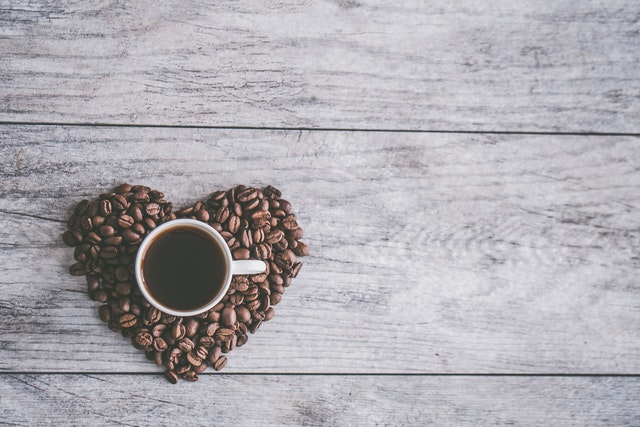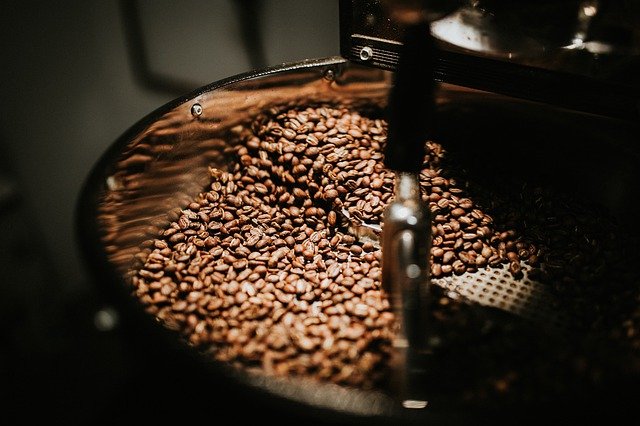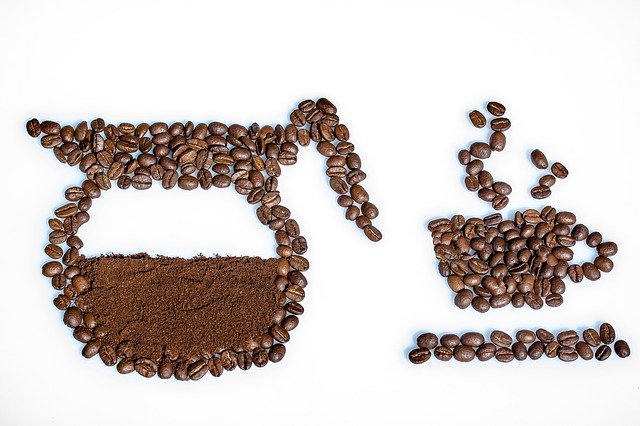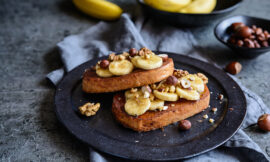Light Roast Coffee Brewing Guide
For many coffee drinkers throughout the globe, light roast coffee is quickly becoming the preferred brew. The taste of light roast coffee is delectably delicate, with numerous diverse flavor nuances. The quality of the roasted beans and the roasting temperature are the keys to making the ideal light brew.
You’ll need a few things to make the ideal cup of light roast coffee. Make sure you have fresh coffee grounds from your local coffee shop before you begin.
Coffee that has been lightly roasted and ground according to the brew method
- Paper coffee filters and boiling water
- a container for pouring over
- a mug or cup for coffee
What Is The Distinction Between Coffee Roasts?
While the majority of coffee enthusiasts like the various coffee roasts and would drink a different brew on different occasions, only a minority of them are aware of the factors that contribute to the differences in flavor between the roasts.
There are four distinct roast profiles available for coffee roasts.
- It’s a light roast. The color is light brown, and the flavor is moderate and delicious.
- Roasted to a medium degree. A medium brown dry roast with a powerful aftertaste and a medium brown color.
- Roasted to a medium-dark color. A darker roast with a peppery, full-bodied taste that is more complex.
- Roasted to a dark brown color. Dark dark in color, with a burned, ashy flavor.
A “roast profile” is a description of how long a coffee bean was roasted for as well as the technique utilized to roast the bean. Raw, green coffee beans are roasted for varying amounts of time in order to get the desired coffee characteristics. The color of the roasts is the most reliable method to distinguish between them.
Roast profiles might be difficult to understand. Follow these guidelines to determine the roast degree that is appropriate for you:
- In contrast to a dark roast, light roasting produces a more natural taste with medium-high acidity and mild bitterness.
- A medium roast contains a medium-low acidity, a medium bitterness, and a full-bodied taste due to the medium roasting process.
- A darker roast offers a richer, smokey taste and is very low in acidity, yet it is quite bitter because to its high levels of caffeine.
Making Light Roast Coffee: A Step-by-Step Guide
The Discovery of Coffee Things to know before starting a coffee shop What You Need to Know Before Mixing Cocktails COFFEE BREWING METHODS PROCESSING COFFEE BEANS
 THE SCIENCE OF GRILLING MEAT
THE SCIENCE OF GRILLING MEAT
Before the roasting process, raw coffee beans are tiny, green, and tasteless. The perfume and flavor are intense once they have been roast. Using freshly ground beans while brewing coffee produces the greatest tastes, but the roast degree is ultimately the deciding element in the flavor of the brewed beverage.
The following ingredients are required to make a light roast coffee: freshly ground coffee beans; hot water; paper filters; and a pour-over vessel. Using a filter, fill the container halfway with coffee grounds, then fill the rest of the way with hot water. After allowing three to five minutes, strain the coffee into a cup and serve immediately.
Coffee experts believe the brewing of a light roast coffee to be an art form. The proper light roast coffee brew may take years to achieve, and many coffee enthusiasts and baristas spend years perfecting their unique trademark brews.
A few of the fundamental aspects that influence how coffee will taste are as follows: a.
First and foremost, the Coffee Filter should be used.
In certain cases, the flavor of coffee might be affected by using a coffee filter. Always set the filter in the funnel and rinse it well with hot water before brewing to remove any residue that might impair the brew’s flavor.
the size of the grind
With a lighter roast, the beans are less porous, which makes it more difficult for compound extracting agents to be released during the brewing process. With a finer grind, flavor is released into the brew more quickly and effectively.
Temperature of the water
For a mild roast, 203 degrees Fahrenheit is an acceptable temperature to utilize (95 degrees Celsius). The fact that it has a vivid taste means that various brewing temperatures will provide diverse outcomes when using a light roast. Brewing water should be purified and only clean water used.
4. The proportion of coffee to water
You may customize the coffee-to-water ratio to suit your preferences, but in general, for one cup of coffee, use 21 grams (.74 ounces) of grinds to 320 grams (11 ounces) of water for a great brew, according to the manufacturer’s recommendations.
5 minutes for brewing
Duration of brewing affects both the taste and extraction of the coffee from the ground coffee. It takes around 25 seconds to make an expresso, but it takes approximately six minutes to boil a pot of coffee
Freshness of the coffee beans is another consideration.
For the best tasting coffee, always use freshly ground beans. In the course of time, the taste of coffee changes due to oxidization. For those who don’t have access to a coffee grinder, your local coffee shop should be able to grind your coffee for you.
Learn how to make the best cup of coffee by following these steps:
Using either the hand-drip or the pour-over technique, light roasts provide the greatest results. When it comes to making a great cup of coffee, this approach is the most efficient and cost-effective option. Pour-over coffee is made by simply pouring water over ground coffee in a regular container. When compared to utilizing a coffee or espresso machine, this approach is more conventional.
For the ideal cup of coffee, what do I need to prepare it?
- Choose your favorite ground coffee beans.
- Water that is boiling
- Printed coffee filters are available in various sizes and designs.
- Container for pouring liquids
- Cup or mug used for drinking coffee.
Tips and tricks for brewing the perfect cup of coffee.
- Raise the temperature of the water until it is boiling.
- Construct a cone out of the paper coffee filter.
- Fill the cone halfway with clean water and place it into the pour-over coffee machine.
- Fill the filter halfway with coffee grounds.
- Pour the hot water over the coffee grounds in a spiral motion, allowing the water to soak through the grounds until the water is completely gone.
- Allow for 3 – 5 minutes of brewing time, or until the coffee is to your liking.
Enjoy by pouring into a cup.
A Light Brew Coffee Is Characterized by the following characteristics:

A light roast is a processing process in which the raw, green coffee bean is softly roasted at lower temperatures to create a gentle, mild-flavored bean. It is most often used in espresso production. It is necessary to roast the green coffee bean until it cracks, which occurs within a few minutes after the start of the roasting process in most cases.
Dark roasted beans have traditionally been used to make brewed coffee. Using a lighter color for roasting beans is a novel idea, and it requires continuous monitoring of the beans during the roasting process in order to get the desired color and taste. Using lightly roasted coffee beans, create a light brew for your morning cup of coffee!
The mild roasting method results in a light brown roasted bean with a dry surface and a pleasant, toasted flavor that is good on its own or with other foods. Coffee beans that are lighter in roasting do not often have the dark color or burned flavor associated with darker roasting techniques. The taste of coffee becomes more complex the lighter the roasting of the bean is.
With a light roast, the coffee bean retains more of its natural flavor while not imparting the burned, bitter, and frequently heavy flavor associated with dark roasted coffee beans, which may be unpleasant. This roasting process preserves the distinctive qualities of the coffee bean while allowing the nuanced coffee tastes to show through!!
Even if you are used to drinking dark roast coffee, the softer flavor of well-bred light roast coffee may surprise you with its mildness. Unlike a dark, oily beverage, a light roast does not have a strong flavor.
As opposed to coffee, it is a smooth, light beverage that may give the impression that you are sipping tea rather than coffee!
An exhilarating, strong, fruity-flavored, delectable beverage is produced by roasting a coffee bean lightly enough to generate a light roast coffee beverage. Make a request for one of these delectable beverages when purchasing a light brew coffee from your local coffee shop:
- roasting peppers with cinnamon
- An ad hoc roast for half of the city
- City roast that is not too heavy.
- A roast from New England.
Which coffee is the strongest, a light roast or a dark roast?
Because of the color of the coffee bean, we would all conclude that a dark roast coffee is more potent than a light roast coffee.
Due to the fact that darker roasted coffee beans generate characteristics that overpower the palate with a burned taste, they are not recommended for drinking. The more taste is extracted from the bean, the darker the bean.
A greater taste may be found in lighter-roasted coffee beans as opposed to dark-roasted coffee beans. The taste, minerals, and nutrients in a lighter roasted bean are more concentrated since the bean is not roasted for as long as a darker roasted bean.
In order to make strong coffee, the brewing ratio must be followed by the quantity of water used.
Because of the longer roasting time, light roasts are denser than dark roasts. In the process of roasting, the flavor and caffeine levels of the beans diminish, making the darker roast bitterer in flavor and more bitter in taste than the lighter roast. As a result, coffee consumers mistakenly believe that the darker roast is stronger merely because the flavor is more intense.
In light roast coffee, is the amount of caffeine reduced?
Considering that we live in a modern, health-conscious age in which anything labeled “light” is assumed to contain less fat or sugar or flavor, we would assume that, because this is a lightly roasted coffee with lower levels of caffeine than dark-roast coffee, it would be a healthier cup of coffee to consume. However, this is not the case at all.
There is no difference in caffeine content between a light roast and a dark roast. The fact is that the difference in caffeine content between dark and light roasts is scarcely discernible in the cup.
Instead of the roast of the coffee bean, the brewing process determines the amount of caffeine present in a cup of freshly brewed espresso.
The number and kind of coffee beans you use, as well as the manner of grinding the beans and the length of time it takes to prepare the coffee drink, all influence the final flavor. We like to imagine that since espresso is a thicker, stronger, darker cup of coffee, it should contain more caffeine, right? But is this really the case?
Wrong! However, rather than weight, the amount of caffeine is calculated by volume. So no matter which roast you choose in your coffee, the caffeine concentration will remain the same.
Given that light roast coffee beans are smaller and lighter in color than dark roast coffee beans, if you had to measure one tablespoon of light roast coffee beans, you would end up with more beans in the scoop.
If you weighed 25 grams (.88 ounces) of dark coffee beans, it would seem that you had more than you had of the light roast beans since the dark roast beans are larger in size, but in reality, they are the same weight as the light roast coffee beans.
Whether or not light roast coffee contains acid is a question worth asking.
Not coffee is what comes to mind when you think of acid: anything sour like lemon juice, something that leaves an aftertaste of sour, acidic, bitterness in your tongue. A chemical reaction occurs during the coffee processing that results in the production of acid.
Lightly roasted coffee has a sour flavor, but this does not imply that it is more acidic than darkly roasted espresso. Each and every coffee bean has the same amount of acidity in it.
The amount of acidity that is preserved depends on the roasting procedure. Natural acidity is retained to the greatest extent in a light roast, whereas it is diminished in a deeper roast.
In a cup of coffee, the acidity is responsible for the flavor. A cup of coffee may either be the greatest or the worst cup of coffee you’ve ever experienced. Having a sour feeling in your tongue might be caused by too much acidity in the beverage. Coffee will taste flat if there is not enough acidity.
A cup of coffee is acidic, although it only rates a 5 on the pH scale of 14, meaning it contains less acid than a can of beer or soda, or a glass of orange juice. You may reduce the acidity of your coffee by adding sodium bicarbonate to the brew or by using an alkaline dairy creamer, such as almond milk, in place of regular milk.
Acidity varies from one kind of raw green bean to the next. In order to calculate the quantity of acid present, consider the following:
- Where the coffee beans come from and what they are used for Different soil compositions result in varying levels of acidity in the bean..
- The climate in which the coffee is cultivated is called the growing region. Unlike beans produced in warmer areas, which ripen faster, beans cultivated in cooler climes mature more slowly and have more nuanced tastes.
- Variety of coffee bean is defined as follows: Others favor milder settings, while others prefer warmer regions for their cultivation.
- Specifically, the type of processing used Although the acidity of the wet approach is more noticeable, the sweetness of the natural drying process is more dominant.
- In what ways do light roast coffee flavors differ from other types of coffee?
- Even while strong coffee may give you a boost in the morning, if you want to alter up the taste of your favorite brew, you can add flavorings to the brew to make it even more potent.
- During the roasting process, a variety of tastes may be infused into coffee grinds. Adding flavorings such as fruity, flowery, or sweet to the coffee alters the flavor. Place the still-warm roasted beans in a mixer with the flavoring of your choice and mix on high for 15 minutes, or until the beans have absorbed the flavorings.
A mixture of the following intriguing tastes may be introduced to beans during a mild roasting process:
- Aromas reminiscent of fruits
- Berries such as strawberries, raspberries, and blueberries are among the most popular choices.
- Lemon, lime, orange, and grapefruit are examples of citrus flavors.
- Among the stone fruits are nectarines, plums, and peaches;
- Tomatoes with a savory tang
- Fleurs en bouche
Yummy tastes of rose, jasmine, and camomile.
Sugarcane Honey Vanilla
When it comes to light roast coffee, what coffee bean is the best?
It is becoming more fashionable to drink light-roasted coffee beans, which have a moderate body and sharp acidity. For the first time, when purchasing a light roast, choose a few tiny samples of roasted beans to brew before settling on the best brand for you.
This list contains the finest light roast coffee brands, according to our selection criteria.
Lifeboost Coffee has been voted the best overall.
Ethiopian Sidamo Guji Light Peets coffee, roasted by Fresh Roasted Coffee LLC, is the best value for money. Colombia Breakfast Blend by Luminosa
It is commonly known that the following locations produce beans that are suitable for mild roasting:.
Africa – Rwanda, Tanzania, Kenya, and Ethiopia are among the countries that make up this continent.
The Kona area of Hawaii is a popular tourist destination.
Costa Rica, Nicaragua, and Columbia are all located in South America.
Which is preferable: hot or cold light roast coffee?
Light roasts have more antioxidants than dark roasts, according to research, which may be beneficial for certain long-term health concerns. Reduced quantities of chlorogenic acid, which has anti-inflammatory benefits, are also seen in light roasts.
You may drink a light roast in any manner you choose – whether hot or cold. It is highly delicious and beneficial to your health. The taste is strong and the acidity is brilliant when poured over ice as a chilled coffee. If you drink it hot, it’s quite wonderful and full of silky taste!
Despite the fact that a hot brew is rich and gratifying, and has a lovely scent, there is nothing more refreshing and enjoyable on a hot day than a cold brew of coffee.
It’s amazing how many different ways cold coffee may be consumed. If you want a cold coffee, you may pour it over ice as an iced coffee, or you can make a coffee over ice with hot water! By brewing the coffee in this manner, the brewed coffee is forced to cool immediately, allowing all of the tastes to remain in the cup.
The intensity of your brew will be determined by the roast profile you choose, regardless of whether your drink is served hot or cold, so choose carefully.
Conclusion
Coffee lovers will almost certainly have their preferred brew on hand, whether it’s a light roast, medium roast, or even dark roast, depending on their own preferences.
It’s a delightful cup of coffee that’s packed with flavor. Because they are not roasted for as long as darker roasts, light roast coffees keep more of their natural taste. When compared cup for cup, they do not contain any more caffeine than the darker roasts, but they do provide the sour flavor that you love in your morning cup of jo.
If you appreciate the scent of coffee but don’t care for the bitterness, a light roast is an ideal choice for you. A light roast produces a drink that is gentler and more delicate in taste, with a hint of coffee.





